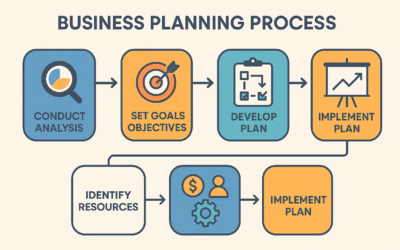If you own a business (or plan to) that will see customers on a regular basis, then you know how important customer service is when someone expresses a complaint or concern. The way you handle it will keep the customer loyal, or they’ll leave and go to your competition.
Customer complaints happen all the time, and when they do, the customer typically has a genuine reason for the complaint. Because of this, it’s in the best interest of your business to take it seriously and deal with the complaint as efficiently and professionally as possible.
Here at GR-US.com, we want you to keep your business running successfully. That is why we came up with a few tips to help you manage customer complaints.
Remain Calm and Collected
The last thing you need is to get your customer even more upset by reacting to what they’re saying off of emotion. If you let yourself get upset back, it will only make the situation that much worse. Not only that, it will reflect poorly on your business.
Whether it is yourself or someone else in the business who handles customer complaints, it’s essential that you remain calm and collected.
Listen to the Issue
To know what is going on, you need to listen to everything the customer says. Encourage the customer to express how they feel so that you can get to the bottom of the problem. Before you can begin to offer any solutions, the customer needs to let off steam so that he or she can then calmly talk with you.
Acknowledge the Customer’s Complaint
It is one thing to sit and let the customer let off steam. It’s a whole different task, though, to then acknowledge that you’ve listened and heard the customer complaint. Repeat back to them the main point of their complaint. This will help calm them down, show that you genuinely did listen to them and that both of you are on the same page.
Gather as Much Information as Possible:
At this point, you’ll want to determine if your company is at fault or there was a misunderstanding. If you still need more information, start asking questions. You want to ensure that you keep the conversation flowing and not sounding like it’s scripted. Be genuine with your voice, and take the time to ask crucial questions that will get you all of the facts.
Come Up With a Solution
Once you have a clear understanding of the issue, then you can start to offer a solution. It could be simple as explaining there was a miscommunication and offering a discount, or it may require someone higher up to handle the complaint. Either way, provide a solution that would benefit the customer.
Follow Up if Necessary
Once you agree on a solution, the complaint doesn’t end there. It’s in the best interest of the company to have a follow up with the customer. This will ensure that they are happy with how the conversation went and the solution you offered.
The follow up is what can make you stand apart from other companies. Offer one last apology for the confusion, any kind of gifts you want to give the customer, and thank them for bringing their concerns forward.

0 Comments